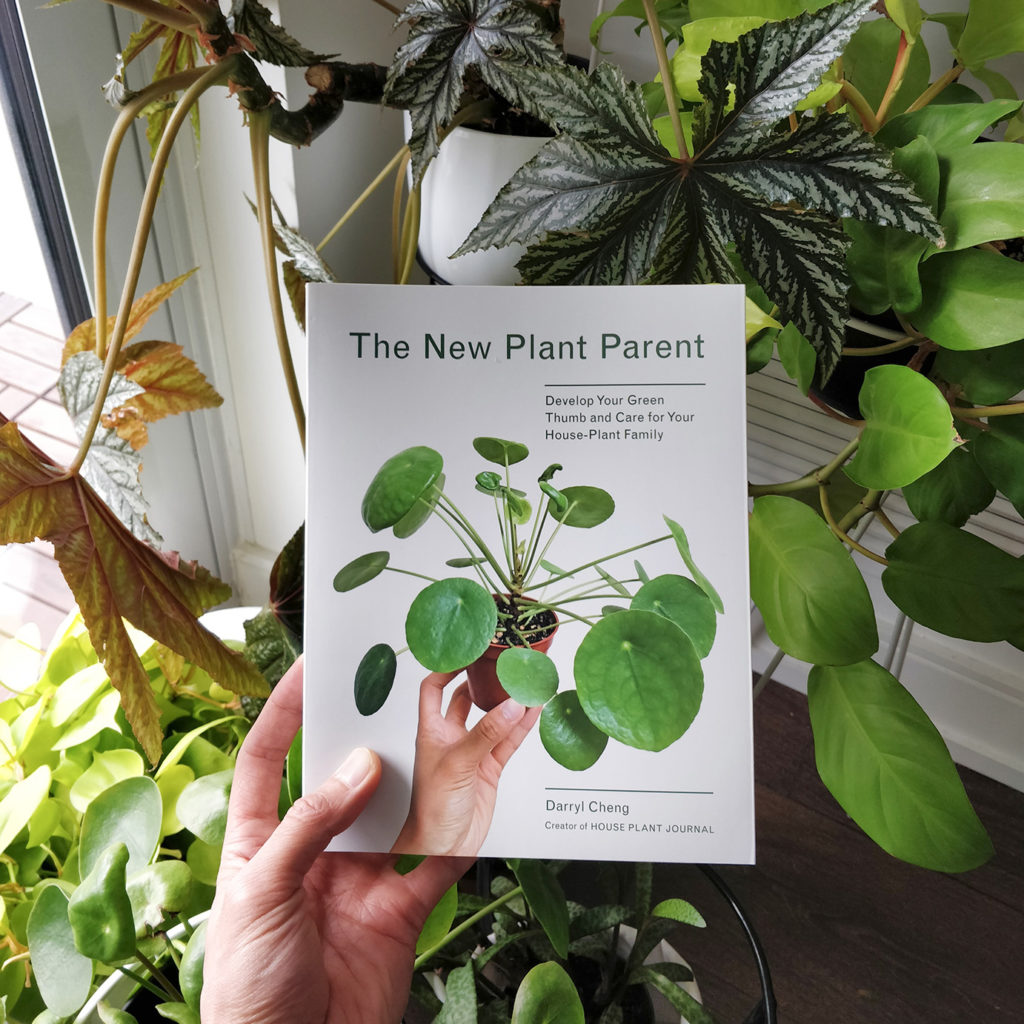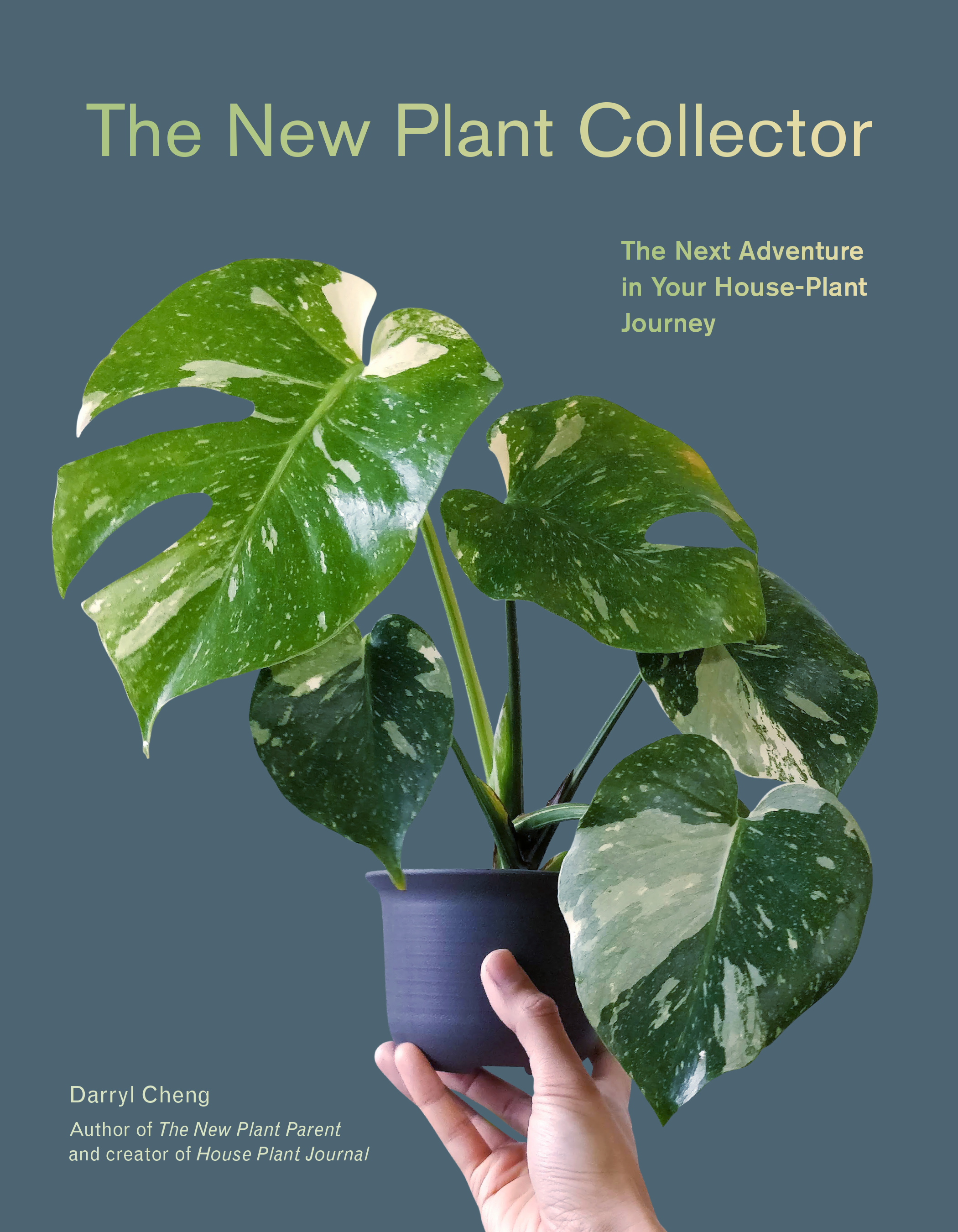Last time, I talked about making connections between light meter readings with your physical environment. We saw that when the sun is in the direct line of sight with the light meter, the readings will be very high: 4000-6000 foot-candles through glass (as in the above photo) and 10,000 and above when outdoors. If the sun is blocked, the readings are proportional with the total visible area of sky – basically, the readings are higher with more visible area of the sky. The critical implication is this: your walls and ceiling are blocking MOST of the visible sky all around you, so the “best possible” light situation you can give your houseplants is to put them where they have the widest possible view of the sky *AND* consider the duration of direct sun.
But if you let your plant see “as much of the sky as possible”, the sun may also come into view for some duration depending on the size and direction of your windows and outdoor obstructions. Does this still count as “bright indirect light?” Yes, but it very much depends on the size of your windows.
First, let me tell you about a confusion around the definitions of “shade” – a simple definition of the word itself means a place where there is NOT a direct line of sight with the sun. But in gardening, a place defined as “shade” is a place that receives 0-4 hours of direct sun. In other words, that place, defined as “shade” might have direct sun for up to 4 hours. Thus, the gardening definition of “shade” must not be confused with the simple definition of the word itself – because at some point during those 4 hours of direct sun, you might look at a plant and think: I thought this plant was supposed to be for “shade”.
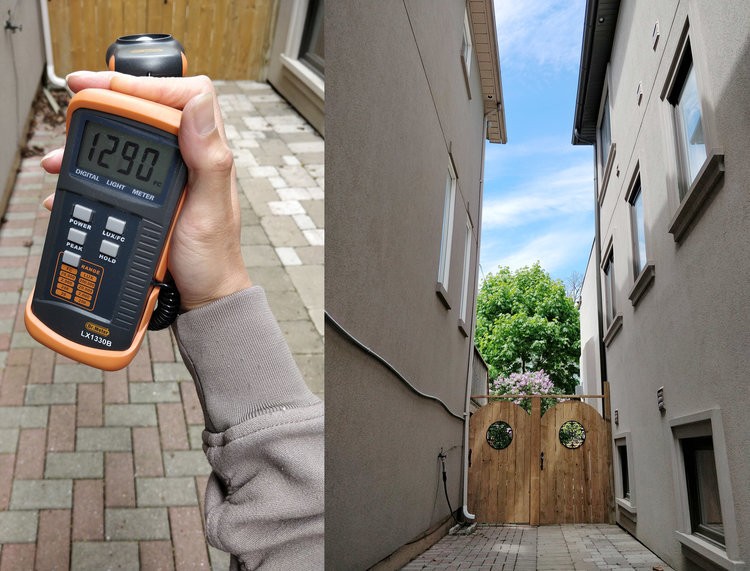
An example of such a place might be between two houses – but think about how much of the SKY is covered. The houses obstruct the sky on two sides but the patch directly overhead is open where the sun shines for those few hours.
Now let’s move indoors facing a window and ask ourselves how much of the sky is covered – directly overhead is now covered by a ceiling and walls are all around us.
So a simple definition of “indirect light” would imply that the sun does not shine directly on the location. But this does not help you judge whether the location is actually bright enough and would make you think that distance from the window, size of the window, and outdoor obstructions don’t really matter. To me, this is the main reason why houseplants die: the importance of light is poorly emphasized by vague descriptions of light. The second reason is that houseplants are seen as decor, which implies that you put them where you think they will look nice rather than where they can see the sky.
To answer the question: yes, a spot that is considered “bright indirect light” may receive direct sun for a few hours.
The reasoning is the same as how a spot considered “shade” (the gardening definition) may receive up to 4 hours of direct sun. Make no mistake: a spot considered “bright indirect light” (or “low light” for that matter) is NOT just any place away from direct sun.
Think through my general guideline of light: put your plant where it can see as much of the sky as possible and consider the hours of direct sun that your plant can tolerate (obviously this varies per plant). Let me explain why it aligns better with what a light meter will tell you.
- Distance from the window: “see as much of the sky as possible” means the closer your plant is to the window, the more light (from the sky) it receives.
- Size of the window: “see as much of the sky as possible” means the bigger the window, the more light the plant receives. More windows? Even better. And what about the duration of direct sun? You can block the sun with a white sheer curtain if the duration is too much for your “bright indirect light” type of plants.
- Outdoor obstructions: “see as much of the sky as possible” means with fewer obstructions, you’ll have more view of the sky and thus, it will be brighter. There’s one big exception though – reflections. Take your light meter and try measuring the ambient light when you put a black cloth compared to a white cloth beside the meter. The same thing is happening with light colored or reflective buildings on the opposite side of the sun.
The reality is…
…anyone whose houseplants always look amazing (and they’ve had them for a long time) likely has huge, unobstructed windows…and knows when to water. Plants grow into the shape of their lighting situation, not because of some magic called a “greenthumb”. If you can accept this reality then you can develop realistic expectations on how your plants will grow instead of being disappointed that your fiddle leaf fig has lost 90% of its foliage even though you watered it exactly as the instructions said.
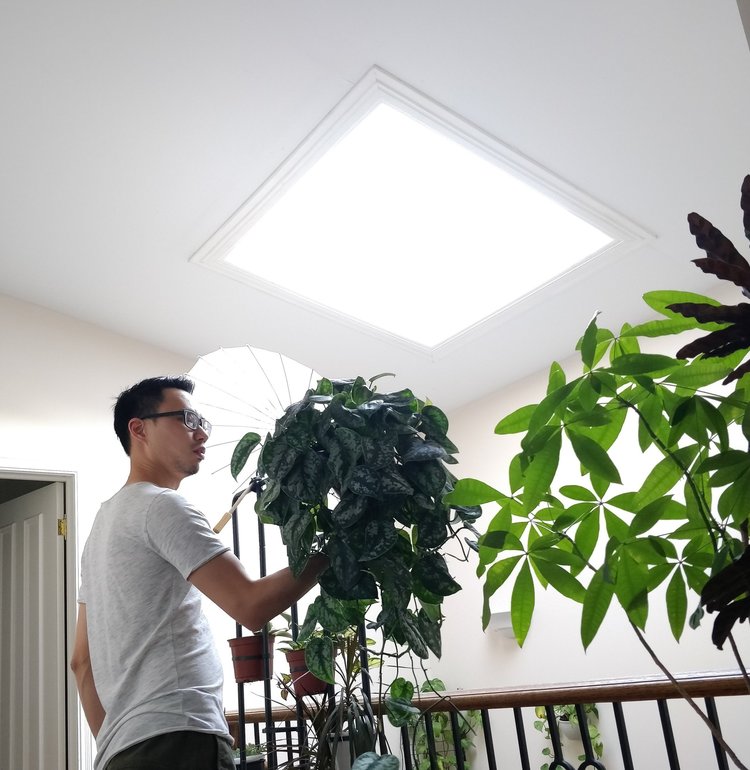
Next time: what is PAR and why I’ve been able to grow houseplants just fine without measuring it.
A light meter is so critical to understanding light that I designed and manufactured my very own:
The LTH Meter
Light | Temperature | Humidity
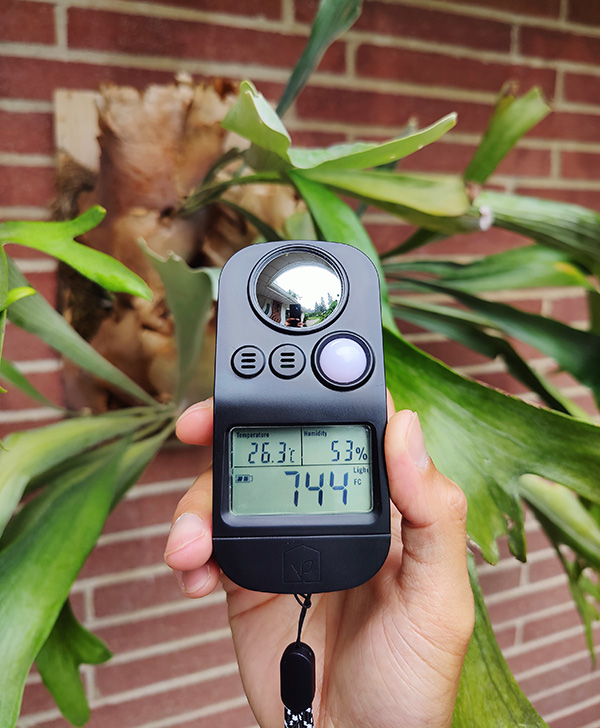
I designed and manufactured the LTH Meter with houseplant owners in mind. When you know your light situation, you will know where to put plants (and where NOT to put plants) – and you can start using grow lights properly!
My old, clunky light meter: https://amzn.to/317tUqu (affiliate links support the work of HPJ)
PAR meter (but don’t buy it until you’ve read my upcoming blog post, which should help you decide if you actually need it): https://amzn.to/2A3j88Q
My approach to houseplant care emphasizes understanding your environmental conditions, trying your best, and letting Nature take its course. This is the philosophy that will help you develop a lifelong appreciation for plants, beyond just objects of decor. My books, The New Plant Parent and The New Plant Collector will guide you in this way:
